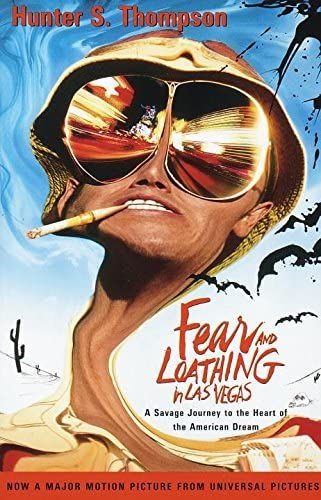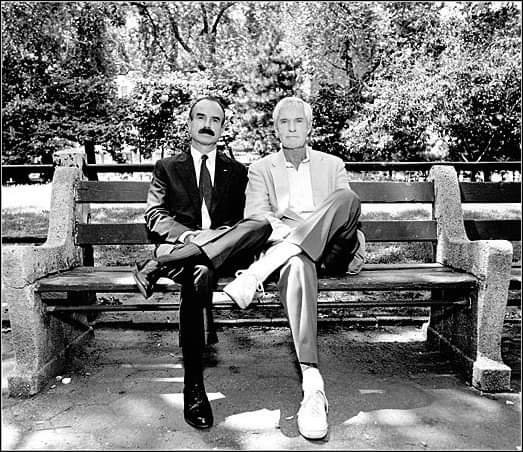Despite his infamy and groundbreaking research in the field of psychedelic-assisted therapy, Timothy Leary is pretty controversial and polarizing in the counterculture world. On one hand, he was a key figure in the advancement of the psychedelic movement by spreading the word and being a primary proselytizer for these compounds; on the other hand, some people believed he was reckless and sometimes self-serving, and at one point, rumors began circulating that he had worked with the FBI in exchange for a shorter prison sentence. All in all, the life of Timothy Leary was interesting, complicated, and shrouded in a bit of mystery – let’s take a closer look.
To stay current on everything important happening in the industry, subscribe to The Cannadelics Weekly Newsletter. Also, it’ll get you premium access to deals on cannabis flowers, vapes, edibles, and much more! We’ve also got standout offers on cannabinoids, like HHC-O, Delta 8, Delta 9 THC, Delta-10 THC, THCO, THCV, THCP & HHC, which won’t kill your bank account. Head over to our “Best-of” lists to get these deals, and remember to enjoy responsibly!
Timothy Leary – “Turn on, tune in, drop out”
Timothy Francis Leary was an American psychologist and author known for his work and advocacy in the field of psychedelic research, particularly LSD and psilocybin. He was a Harvard lecturer until he got kicked out of the university for conducting experiments using psychedelics, in which officials claimed that he was both using psychedelic drugs along with the students and pressuring some to participate – although some of his students have denied the latter.
The experiment was known as the Harvard Psilocybin Project, and he led this experiment from 1960 to 1963, before getting fired in spring of 1963. It all started after Leary had an eye-opening experience with magic mushrooms in Mexico, and concluded that psilocybin and other psychedelics could be the “solution for the emotional problems of the Western man”.
In addition to Leary, other founding members of the project were: Aldous Huxley, Richard Alpert, David McClelland (Leary’s and Alpert’s superior at Harvard University), Frank Barron, Ralph Metzner, and two graduate students who were working on their own separate project with mescaline. The first study conducted by the group was composed of 38 people of various ages, all from different backgrounds.
“Set and setting” (a concept and term coined by Leary) was a big part of the experiment and the subjects were directed to control their own dosage and intake. Lead researchers, Leary and Alpert, took psilocybin with the students, claiming that they “had to be in the same state of mind as the subjects to understand their experience in the moment it happens”. This was the subject of much controversy during the course of the experiments, but if you actually use psychedelics, you know it does make sense to have everyone be on the same wavelength.
The conclusion of their study was that, although 75% of the subjects described their trips as “generally pleasant”, it was noted that 69% went beyond that and had reached “a marked broadening of awareness”. They repeated the experiment with more test groups, and by the end of the study had a total of 167 subjects, 90% of which stated that their participation in the psilocybin project had “changed their lives for the better”.

In 1961, Leary decided to change the direction of his research a bit and focus on using psilocybin to rehabilitate inmates and reduce rates of recidivism. This was known as the Concord Prison Experiment, and it ran from February 1961 to January 1963. The test group was composed of young inmates from a maximum-security prison in Concord, Massachusetts. This team was also under the direction of Timothy Leary and included Michael Hollingshead, Allan Cohen, Alfred Alschuder, George Litwin, Ralph Metzner, Gunther Weil, and Ralph Schwitzgebel, with Madison Presnell as the medical and psychiatric adviser.
Much like their previous study, a test group of 32 inmates were given psilocybin as part of a group psychotherapy program. Again, the researchers participated in the experiment themselves, on the grounds of “creating a sense of equality and shared experience” and to “dispel the fear that often accompanies relationships between experimenters and subjects”.
The results were interesting. Records at Concord State Prison suggested that 64 percent of the 32 study participants would return to prison within six months of parole. However, if they made it past the six-month mark, recidivism rates dropped to only 25% of the parolees. Additionally, personality tests administered during their first year out of prison indicated that there were “measurable positive changes” when comparing pre- and post-psilocybin results.
Leary, along with his closest colleague Richard Alpert, were fired from Harvard in May 1963. It wasn’t until news of the scandal hit the papers, that many people learned about psychedelics in the first place. This led to a growing curiosity about what these substances are, and what they can do for the everyday patient.
Although Leary’s Harvard experiments focused primarily on psilocybin therapy, he had developed a strong interest in LSD. He tried it, and began to develop theories and philosophies about how LSD can be used in psychiatry to expand the mind and help patients “discover personal truths” about themselves. After leaving Harvard, Leary really ramped up his public promotion of psychedelic drugs and his popularity grew as a counterculture icon. He also created and popularized some fun industry catchphrases such as “turn on, tune in, drop out” and “think for yourself and question authority”.
He also wrote and spoke extensively about various transhumanist ideas and concepts such as space migration, intelligence increase, and life extension. Leary also developed what became known as the eight-circuit model of consciousness, which he outlined in his 1977 book Exo-Psychology.
FBI Collaboration and other Controversy
One of the primary issues people had with Leary, was the shift in his methodology. His research had started off with a huge emphasis on careful control, or “set and setting”, but as his public image grew, his projects became increasingly unstructured and undisciplined, many people believed. Author and former friend of Leary’s, Hunter S. Thompson, describes his take on it in Fear and Loathing.
“That was the fatal flaw in Tim Leary’s trip. He crashed around America selling ‘consciousness expansion’ without ever giving a thought to the grim meat-hook realities that were lying in wait for all the people who took him seriously… All those pathetically eager acid freaks who thought they could buy Peace and Understanding for three bucks a hit. But their loss and failure is ours too. What Leary took down with him was the central illusion of a whole life-style that he helped create… a generation of permanent cripples, failed seekers, who never understood the essential old-mystic fallacy of the Acid Culture: the desperate assumption that somebody… or at least some force – is tending the light at the end of the tunnel.”
So basically, some people believe Leary was crazy, others think he was nothing more than publicity hound, and many say his studies were flawed and they trivialized the seriousness of psychedelic drug research, and that his books were clichéd. But many of those talking points are just a matter of speculation and personal opinion. What really turned a large number of people against Leary, were some rumors that spurred in 1990s stating that he was secretly cooperating with the FBI in 1974, informing on liberal activist groups in order to strike a deal for his release from prison.

The group that he allegedly “snitched” on was known as The Weather Underground, a “radical, left-wing militant organization” formed in 1969 by a group of students at University of Michigan – Ann Arbor Campus. The group, which was originally called The Weathermen, was a faction of the Students for a Democratic Society, which focused on issues such as the Vietnam war and social equity. Their ultimate goal was to “create a more democratic society which guarantees political freedom, economic and physical security, abundant education, and incentives for wide cultural variety”.
As far as the FBI is concerned, the Weather Underground was a domestic terrorist group who they claim took part in numerous attacks on domestic soil… one of which was the organized prisonbreak of Timothy Leary in 1970. “I want to get out of prison as quickly as I can,” Leary said in a meeting with an FBI agent, a Drug Enforcement Administration agent and two California state law enforcement officials, and that he wanted to see “if [he] can work out a collaborative and … an honorable relationship,” with the feds.
Leary (who was no stranger to the law, having been arrested a total of 36 times) detailed how members of the Weather Underground helped him escape from a San Luis Obispo prison in 1970, while he was serving a 10-year sentence for marijuana possession. After the escape, Leary traveled around the world until 1973, when federal agents caught up with him in Afghanistan and he was extradited back to California. In one passage, an agent said, “You’ve mentioned numerous Weathermen so far, is it correct to assume that each one of them knew … they were aiding in your escape?” Leary responded with, “Oh, no question about it.”
Stories that Leary was cooperating with the FBI circulated back the 1970s, well before the FBI documents were leaked, but many of his supporters said the “high priest of LSD” was simply lying to the feds so he could get an early release. “Nothing Leary told the FBI resulted in criminal charges,” said Douglas Rushkoff, Leary’s literary agent and close friend. “He wanted to be a productive member of society and not stuck in jail,” said Rushkoff. “It’s just so funny that this stuff is being used to discredit him.”
What happened next?
In 1976, Leary was released from Folsom prison and entered the witness protection program. After briefly relocating to Santa Fe, New Mexico, Leary then moved to the Laurel Canyon neighborhood of Los Angeles, California, where he resided for the rest of his life. Unable to secure a conventional academic or research approval due to his reputation, he continued to publish books through the independent press while maintaining an upper-middle-class lifestyle by making paid appearances at colleges and nightclubs as a self-described “performing philosopher”.
Leary eventually developed an unlikely friendship and partnership with former foe “the Watergate burglar”, G. Gordon Liddy, a conservative radio talk-show host. They joined the lecture circuit as a team of ex-cons debating a wide range of controversial, hot-button topics including abortion, gay rights, welfare, and the environment. Leary took the liberal, left-wing perspective while Liddy argued from the conservative, right-wing side of the fence. The tour was incredibly popular and a major source of success and wealth for the both of them.

Leary continued to use a bunch of drugs (per his own account) ranging from psychedelics to alcohol and even heroin. He had a large circle of high-profile friends including Johnny Depp, Susan Sarandon, Dan Aykroyd, and Spin magazine publisher Bob Guccione, Jr. He continued making public appearances until 1994, despite his waning health. In 1995, Leary was diagnosed with inoperable prostate cancer, and he passed away May 1996. During those final months, he reconnected with old friends and colleagues who helped facilitate the process of directed dying, which Leary called “designer dying”, or dying on his own terms.
Final thoughts
Despite being viewed by some as a self-serving individual, it’s safe to say that psychedelics would not have received as much attention if not for his work – in both positive and negative ways. It’s also reasonable to assume that the attention he brought to these substances may have contributed to their eventual illegalization, because when Leary began his studies, both LSD and psilocybin were both still federally legal. But it really is a double-edged sword in the truest sense of the phrase, because if anyone makes a novel discovery that can help others, especially in such a profound way as psychedelics, of course they would want to share it with the world.
Summarized, Timothy Leary was a complicated man with an equally complex life. From a psychedelic guru once known as “the most dangerous man in America”, to a possible FBI informant in witness protection, he’s a person with many layers. Probably one of the best ways to learn more about him, would be to read through his books, some of which you can find here.
Hello readers! We appreciate you joining us at Cannadelics.com, a top choice news platform for independent coverage of the growing cannabis and psychedelics landscapes of today. Come by the site whenever possible for updates on current and world-changing events, and head over to the Cannadelics Weekly Newsletter, so you’re always up on what’s going down.